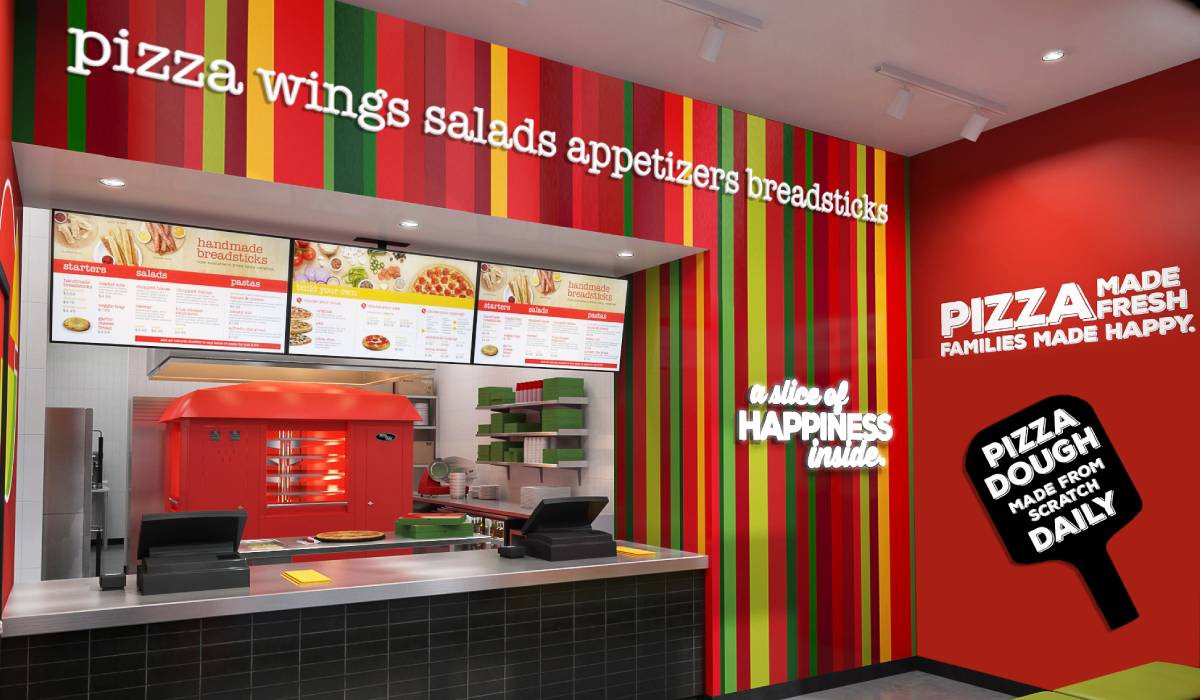Peter Piper Pizza is known for entertainment with its 10,000-square-foot restaurants and arcade rooms, but food and beverage are the real stars.
The menu accounts for 75 percent of revenue, which became quite important once the industry headed into the pandemic. Average off-premises mix has grown to more than 40 percent, with some stores reaching as much as 70 percent. It’s the inverse of sister restaurant Chuck E. Cheese, a brand relying more on experiences and building off-premises through virtual concept Pasqually’s Pizza & Wings.
David McKillips, CEO of Peter Piper and Chuck E. Cheese parent CEC Entertainment, says the pizza brand’s menu prowess dates back to its founding 49 years ago. The concept was started by Tony Cavolo, a World War II and Brooklyn native, who brought the idea of a neighborhood pizzeria to Glendale, Arizona. From the beginning, Peter Piper was built on made-from-scratch pizza dough and high-quality ingredients. CEC acquired the chain in 2014 from private equity firm ACON Investments.
The company took notice of Peter Piper’s resiliency during the pandemic. Now that restaurants are fully open, the brand caters to multiple customer segments—lunch crowds enjoying the buffet, families coming at dinner to play games, birthday parties and group events, and of course, the budding off-premises consumer.
The takeout/delivery performance was proof that Peter Piper was capable of growth drivers outside of its typical eatertainment footprint.
The chain has more than 120 traditional locations in Arizona, Texas, New Mexico, California, and Mexico, with more than half of the system operated by franchisees. To further meet demand, the company plans to open a carryout/delivery unit in Phoenix, Arizona, in March called Peter Piper Pizza Express.
Two more locations have already been pinned down, and McKillips says the brand is currently on the hunt for a third spot in the state.
“It was really a natural step for the brand to look at doing a smaller unit where we could go into a market where we’re so well-known and deliver this great pizza,” McKillips says. “At each location, one of the signatures about the brand is we make homemade dough every morning. We’re cutting all of our vegetables and ingredients right in front of you. Even the carryout and to-go locations feature that, as well.”
The momentum is a stark turn from the summer of 2020, when CEC declared bankruptcy just a few months after COVID arrived in the U.S. From March 17 to 26 of that year—when dining and arcade rooms were first closed—comparable venue sales dropped 94 percent year-over-year. In early April, the company furloughed most of its hourly employees and approximately 65 percent of its support center personnel and suspended rent.
CEC emerged in December 2020 with the elimination of $705 million in debt obligations, more than $100 million in liquidity to support operations and growth initiatives, and a new board of directors.
The off-premises unit is roughly 1,300 square feet, using about 85 percent less space than a regular store. The back of house features a full-sized kitchen and a custom Roto-Flex stone fire pizza oven that reaches 500 degrees and can bake more than 200 pizzas per hour.


The equipment allows Peter Piper to offer the same menu as its larger stores, except pasta, which is served during the lunch buffet. That means a variety of pizzas, like the Chicago Classic, Bacon Double Cheeseburger, and 5 Meat Supreme, in addition to wings, breadsticks, cheese bread, salads, and desserts. Pasta may be added to the menu in the future.
Peter Piper will continue to work on size allocation, especially if there’s interest from franchisees, but McKillips estimates the footprint should always land somewhere in between 1,000-1,300 square feet to have space for the oven and dough prep.
Full-service restaurants have between 30-40 positions, including teams covering kitchens, large parties, and ticket redemption. Meanwhile, the to-go store only requires between five and eight positions.
“We maximize every inch in front of house to make it really easy for the guests to come in,” McKillips says. “We’ve got the warmers for the pizzas to make sure it’s a great product when you get it and you take it to-go, and then on the backside, every inch has been manufactured and built for speed.”
Unlike some restaurants, Peter Piper didn’t have to adjust its recipe or ingredients to make food more portable. The chain already had a mature off-premises business prior to COVID, with a respectable 25 percent mix.
McKillips says Peter Piper Pizza Express is the latest example of CEC investing in the brand. For instance, the company purchased 10 franchised restaurants in Tucson and Phoenix, updated the website and created a mobile friendly birthday package reservation system.
Additionally, inside restaurants, Peter Piper launched a funpass program, which customers can purchase and reload cards from a kiosk as opposed to the previous game tokens and paper tickets. Thus far, the new format has increased total arcade play time by 23 percent. The rollout to all locations should be finished by 2022.
Peter Piper Pizza Express’ initial objective is to see how the markets react. If all goes well, the idea would be to extend the offering to franchisees throughout Texas, Southern California, and New Mexico.
“They’re very pleased that we are investing in expanding the brand, and I think we just need to see how it performs. And we’re certainly going to bring this to them as an opportunity for them to expand their presence,” McKillips says.
Peter Piper’s off-premises journey is a path taken by many in the industry. Digital orders placed through an app or website increased 13 percent in 2021, compared to a 100 percent increase in 2020, according to the NPD Group. Delivery, which grew triple digits in the past two years, increased visits by 17 percent, lapping an 89 percent lift in 2020. Carryout increased 2 percent year-over-year.
As a result, major pizza chains like Papa Johns and Domino’s—which were built for off-premises foundation long before the pandemic—have seen consistent double-digit increases in same-store sales.
It’s the type of success Peter Piper hopes to capture with its new growth venture. While the brand is not quite the size of those category leaders, McKillips says he’d put Peter Piper’s pizza up against any national brand in the country.
“This is fresh, daily scratch-made pizza that is just outstanding,” the CEO says.






